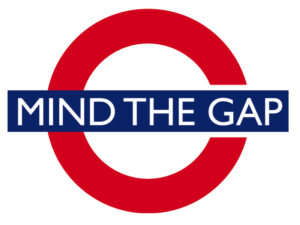When it comes to the technology industry, companies like Apple, Microsoft, and Google often dominate the conversation. However, another name that stands tall in the tech world is IBM. While IBM may not be as frequently mentioned in everyday conversations, its logo is one of the most iconic and instantly recognizable in the corporate world. The IBM logo is not just a symbol; it is a reflection of the company’s long history, values, and technological innovation.
In this blog post, we will delve deep into the IBM logo history, examining its evolution and significance over the years. We will explore how the logo has mirrored IBM’s transformation from a small business to one of the largest and most influential technology companies in the world.

IBM Logo Evolution Story: From Humble Beginnings to a Global Icon
Founded in 1911, IBM—originally the Computing-Tabulating-Recording Company—has undergone multiple transformations, both as a company and in its logo design. The IBM logo history is a journey that reflects the company’s innovations, technological advancements, and global influence.
IBM’s logo evolution is a striking example of strategic design that has helped the company establish its identity in the technology sector. Designed by the legendary graphic designer Paul Rand, the IBM logo is synonymous with confidence, innovation, and technological prowess. But it wasn’t always the sleek and recognizable symbol we see today.



1911: The Early Days of IBM
IBM began as the Computing-Tabulating-Recording Company (CTR), founded by Charles Ranlett Flint in 1911. The company was formed by merging three different companies—Computing Scale Company, Tabulating Machine Company, and Time Recording Company. During this period, the company used a very intricate and detailed monogram as its first logo. This emblem featured ornate details and flourishes, reflecting the company’s initial focus on mechanical devices for business use.

1924: IBM Becomes “IBM”
In 1924, the company was renamed International Business Machines (IBM) under the leadership of Thomas Watson. This change in name was significant, marking the company’s shift towards a more global business strategy. The new name was also accompanied by a new logo that spelled out the full company name—International Business Machines. This logo resembled a globe, symbolizing the company’s ambitions to serve businesses around the world.

The 1950s: IBM Reinvents Itself
During the 1950s, IBM was becoming a tech giant, producing large mainframe computers and leading innovations in data storage and computing languages. With this transformation, IBM decided to reinvent its logo to reflect its technological leadership. In 1947, IBM adopted a new, simpler logo, moving away from the globe design and opting for a bold, modern monogram. The letters were much easier to read, and this was the first time the brand used the iconic blue color, which later became known as “Big Blue.”

1956 – 1962: The Introduction of a Bolder Typeface
In 1956, the IBM logo went through another transformation. The letters were enlarged, and the space within and between the lettering was increased, making the logo more prominent and easier to identify from a distance. This version of the logo established the brand as a modern, forward-thinking company and is one of the more recognizable iterations in IBM logo history.

1962 – 1972: Paul Rand’s Iconic Striped Logo
Paul Rand, a design legend, is credited with creating the most iconic version of the IBM logo. In 1962, Rand introduced a design that featured horizontal stripes running through the bold letters of “IBM.” These stripes were intended to represent speed and dynamism, aligning with IBM’s rapid technological advancements during that era. The striped logo became synonymous with innovation and is considered one of the greatest achievements in corporate design history.

1972 – Today: The Modern IBM Logo
In 1972, the IBM logo was slightly updated, reducing the number of stripes in the letters from 13 to 8. This change made the logo even more streamlined and modern, a reflection of the company’s ongoing technological evolution. This version of the IBM logo has endured for over 50 years and remains in use today. Its clean lines, bold blue color, and iconic stripes have helped solidify IBM’s place as a global technology leader.

2018 – Today: A New Version for a New Era
In addition to the striped blue logo, IBM introduced a new logo variant in 2018. This version, which is primarily used in gray and white, places the IBM letters within a rectangular emblem. This version symbolizes stability and responsibility, aligning with IBM’s role as a leader in IT consulting and business services.

The Meaning Behind the IBM Logo
The IBM logo is more than just a corporate emblem—it’s a powerful symbol of the company’s history, values, and technological advancements. The logo has always been designed to reflect IBM’s forward-thinking approach and commitment to innovation. Over the years, the IBM logo has maintained its professionalism, simplicity, and timeless appeal, which has made it one of the most recognizable logos in the world.
Font Choice in the IBM Logo
Throughout its history, IBM has consistently used bold fonts in its logo designs. Earlier versions of the logo featured ornate fonts with curls and flourishes, but by the late 1940s, these details were simplified to make the logo more modern. In 1956, Paul Rand introduced the City font, a more geometric and structured typeface, which remained a key element of the IBM logo. The current logo uses a custom serif typeface that reflects the company’s historical roots while maintaining a modern and bold appearance.
The Significance of IBM’s Blue Color
The color blue has been a central part of IBM’s branding since the 1950s. Often referred to as “Big Blue,” the color symbolizes trust, reliability, and professionalism—qualities that IBM wants to convey to its customers. This shade of blue has remained consistent across all versions of the IBM logo and is now closely associated with the brand’s identity.
The Stripes and Symbolism
The most distinctive feature of the modern IBM logo is the horizontal stripes that run through the letters. Introduced by Paul Rand, these stripes are meant to symbolize speed, innovation, and the digital nature of IBM’s products and services. Some interpret the lines as a reference to the early use of punch cards and computers, which aligns with IBM’s focus on computing technology.

The Legacy of the IBM Logo
The IBM logo history reflects not only the evolution of graphic design but also the company’s journey from a small mechanical business to a global technology leader. Each version of the logo has represented the company’s values and ambitions at that moment in time. Whether it’s the ornate early logos or the sleek, striped design that has become iconic today, the IBM logo has always played a key role in establishing the company’s identity in the tech world.
The IBM logo is a symbol of excellence, innovation, and leadership in the tech industry. From its early days as the Computing-Tabulating-Recording Company to its current position as a global IT leader, IBM’s logo has mirrored the company’s evolution and growth. The journey of the IBM logo history is a testament to the power of strategic design in building a brand’s identity and recognition on a global scale.
Whether you’re a graphic design enthusiast or a technology buff, the history of the IBM logo offers valuable insights into how design and business strategy can work together to create a lasting impression.







































































